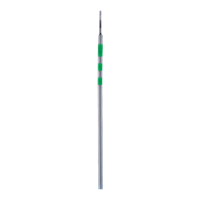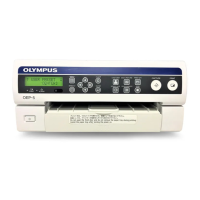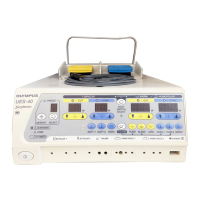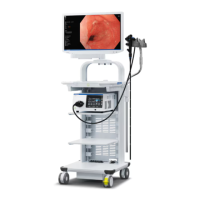Chapter 6 Recommended Reprocessing Methods and Chemical Agents
35
VISERA RHINO-LARYNGO VIDEOSCOPE ENF-V2
Chapter 6 Recommended
Reprocessing Methods and
Chemical Agents
6.1 Compatibility summary
The materials and construction of Olympus endoscopic instruments may not be
compatible with certain reprocessing methods.
Olympus distinguishes validated methods in terms of the following two points.
• Microbiological efficacy
• Material durability
Microbiological efficacy
If it is stated that a method is “validated” in terms of microbiological efficacy, it
means that instruments have been reprocessed successfully using the
standardized method described in this manual.
Material durability
If it is stated that a method is “validated” in terms of material durability, it means
that the method can be adopted as a repetitive reprocessing procedure.
Just because the material durability is confirmed, it does not mean a certain
degree of microbiological effectiveness is guaranteed.
Choosing a reprocessing method
The actual reprocessing method chosen by your institution should be
determined by national and local regulations and/or guidelines as well as your
hospital’s infection control committee.
In general, instruments can be cleaned manually or automatically with sufficient
results. Manual cleaning methods pose infection risks for cleaning personnel.
Automatic methods reduce these risks and provide the advantage of
standardized and validated procedures. Therefore, in general, Olympus
recommends automatic cleaning procedures.
Contact your local infection-control representative to determine which cleaning
method would be appropriate in your facility for a given instrument.

